Over 500 hours of video are uploaded to YouTube every minute, and over a billion hours are consumed per day. It begs the question, how does a creator get their voice heard when the metrics are stacked against them? I sat down with Chad DeRosa, full-time overlander, award-winning filmmaker, and professional YouTuber (Living the Vanlife), to learn more.
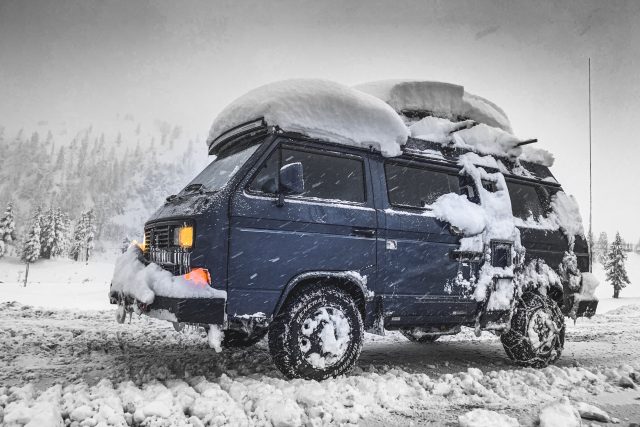
Chad is arguably best known for documenting overland adventures in his 1990 Vanagon Westfalia; one of his winter camping episodes has over 16,000,000 views. The channel’s success was not achieved overnight but required a decade of hard work and “taking chances.” One key theme that has been present throughout his journey is the correlation between life on the road and the opportunities it provides. “The van has been at the heart of everything I’ve achieved over the past decade,” Chad says.
During the pandemic, the Living the Vanlife channel evolved once more as Chad transitioned from his trusty Vanagon Westfalia to a Mercedes Sprinter 4×4. This was no easy decision; after all, the Volkswagen had become the star of the show. However, with 310,000 miles on the clock, an imminent engine replacement, and more challenging trips in the works, it was time to make the change. The plan was simple: create the most capable overland vehicle possible on the Mercedes Sprinter 4WD platform. According to Chad, the new rig would be a “tool for remote exploration” that would test the limits of his production and storytelling.
Chad is a true master of his craft, and the content he produces continues to be a source of inspiration for the overlanding community. I’ve been a fan of his work for many years, but speaking with him in person only reaffirmed that the genuine, insightful, knowledgeable, and all-around inspirational personality that’s been so integral to the channel’s success is the real deal.

Your website journal begins, “The truth is, every man dies. But not every man lives.” What does this quote mean to you?
It’s a line from a country song by Jason Aldean. I was listening to it in my Vanagon, driving toward the north entrance of Yellowstone Park. It was a beautiful morning on a random dirt road, and in that moment, the song struck a nerve. It was my first big solo trip, and all my senses were firing at once, so when that line hit, I was like, “Hell, yeah,” and it’s been my mantra ever since. We have one life to live, so we might as well live it to the fullest.
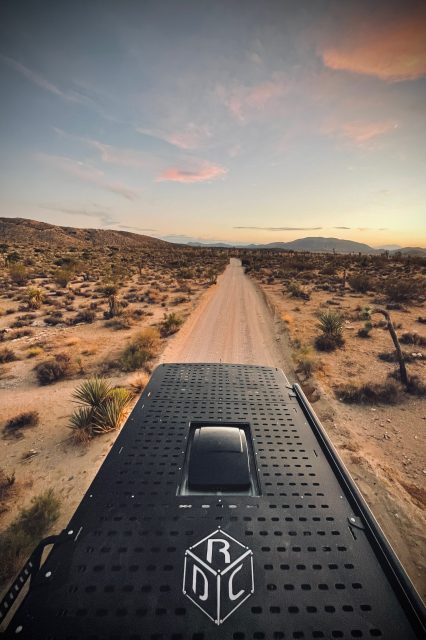
Tell me about your first year living on the road.
I’d previously been living what you’d call the American Dream. I had a career, marriage, kids, a nice house, and fancy cars. When that didn’t work out, I wanted an apartment downtown, the big lifted 4WD pickup, etc. But every six months, I wanted change because I wasn’t happy. Living in the van with barely any possessions was the happiest I’d ever been, and it solved all my discontentment issues.
Can you tell me a little about your award-winning film Out of Nothing and how that came about?
It came to fruition thanks to the opportunities the van provided. I started living in my Vanagon and pursuing photography and filmmaking in February 2011. During my time working in construction, I got to know these two brothers who built custom motorcycles and figured they were cool subjects to photograph. Their bikes attracted the attention of some big magazines, and I ended up taking the photos, which led to my first published work.
One day we were wrapping up a photo shoot, and the guys said they were building some motorcycles to race at the Bonneville Salt Flats, with the goal of breaking some records. They asked If I wanted to come down with my video camera and document the attempt, but at the time, I was focused on stills and turned down the proposition. I walked away from the scene thinking about the offer and figured that opportunities like this were the primary motivation for living in the van. I’d always wanted to tell a story with my filmmaking, and this was that chance. I had no excuse, so I borrowed a video camera, built a homemade slider, and jumped in the van. I headed to the bike shop, interviewed the guys, and quickly realized this was a story that needed to be told. A few weeks later, I loaded up the van, headed to Bonneville, and started shooting a documentary.
After two years of filming, we sat down to [sort] out a name and realized there were parallels between building motorcycles and creating a documentary. They’d begin with an empty garage, but several months later, out of nothing, they’d have a finished motorcycle, and that was comparable to filmmaking. We’d started this project with no expectations, hit record, and two years later had a whole documentary, so we called it “Out of Nothing.” It was submitted to some film festivals, won various awards, and consequently, we ended up traveling around the world.
Life’s about taking chances; it could be as simple as taking an unknown dirt road and discovering a spectacular view or agreeing to document some motorcycles for fun, culminating in film festival awards and international travel.
At what point did you transition to being a full-time YouTuber? What has that process been like?
If you go back to the first video, uploaded in November 2011, you’ll see that it was shot on an iPhone 3. I rarely edited them, even though I had those skills, because it’s so much time and effort, which I couldn’t justify on YouTube. Initially, it was just iPhone movies, three or four minutes long, and it wasn’t until 2015 that I produced an episode with a proper camera and narrative. That episode marked the transition from “how to live in a van” videos to long-form vanlife adventure stories.
I then headed to Europe to shoot Triumph and Harley Davidson motorcycles, and that became my focus. It wasn’t until 2018, when I returned from Australia, that I was left with an empty schedule and the opportunity to pursue YouTube more seriously. At that time, I had 20,000 subscribers, but it gained traction as I invested more time into storytelling and production quality. People loved the winter camping and cooking videos, so I prioritized that.
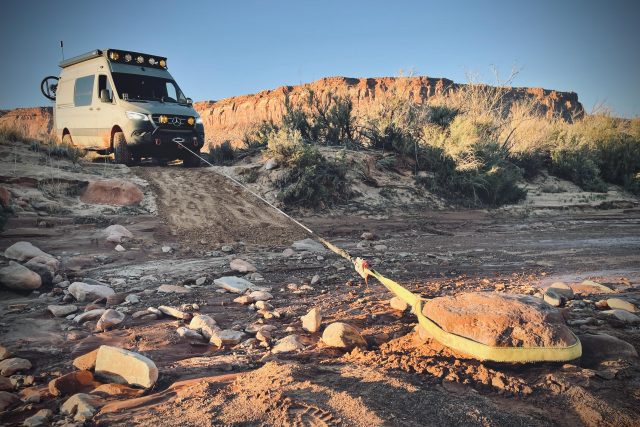
I pressure myself to make each episode better than the last, which can become all-encompassing. At some point, I had to take a step back to appreciate how much the channel was growing. Around February 2019, the ad revenue began to match my previous monthly salary, and that was the moment I realized this was becoming a real career.
One of your videos, “Winter Storm, Living in a Van,” was viewed over 16,000,000 times. What impact did this one video have on your channel’s trajectory?
The winter camping videos are another example of taking a chance on something other people weren’t doing. When I came back from Australia in 2018, it was wintertime, and there were very few people documenting camping in a van during that season. I decided to find remote locations, camp out in the snow, and bring that experience to people. That decision brought hundreds of thousands of views to some of the videos, which, at the time, was huge for the channel. When the next winter came along, I had storm alerts set on my phone and headed out anytime the weather was brutal. That also marked the start of me pushing the limits of my filmmaking and storytelling. The combination of crazy weather conditions, quality production, and a proper narrative was a winning formula. It kicked off overnight, and over the next few days, the channel and videos exploded. I jokingly considered myself a “professional winter camper” because that became my job. I built an audience that is genuinely invested in the videos I produce, which has continued to be my primary motivation for making them.
What’s your process for creating a new video?
I don’t storyboard or write any notes or a script pre-departure; I really try to capture the moment. However, I take time to research trails, areas, and destinations that will be cinematic. I plan to start early in the morning, and as I drive along, film what speaks to me. I aim to set the tone right away; that could be dramatic aerials, vehicle passing shots, etc. The goal is always to capture people’s attention in the first few minutes and then follow up with a piece to the camera to introduce the episode. That’s why I like filming places I’ve never been to, because I want to capture the awe of being somewhere new.
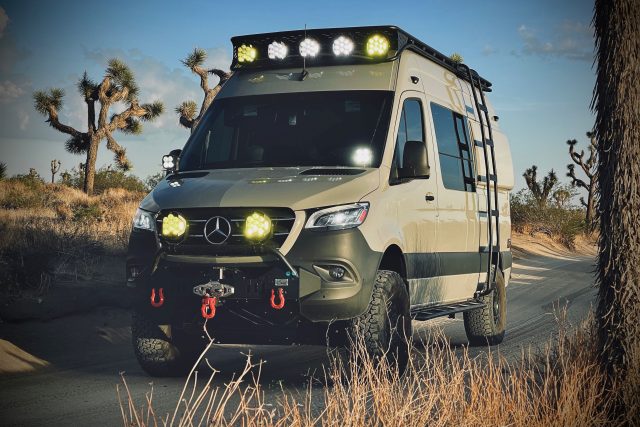
How do you manage the constant pressure to create new content?
It’s important to remember why it all started, which was the love of being behind the camera and telling a story. Somehow, I’ve made that a career for the past 10 years, so it’s important to remind myself of that. It does get stressful at this level to continue creating content, and it’s not simply the demand of subscribers but the pressure I put on myself to uphold what I started and continue to push forward.
I make sure I take time to appreciate the locations I visit, and every day, I’m grateful that I get to pursue my dreams. Throughout building my Sprinter, I took a significant break from the channel as I needed to focus on the build; I’ll tell you what, it felt like I might have a revolt on my hands. Once I’m out there filming, it’s not particularly stressful because I know what I need to do with the camera and the pace I need to work, and the only concern is whether something will prevent me from telling the story. I want all of my adventures to have a start, climax, and finish, so many of the anxieties surround making that happen. I need to accept that it doesn’t always have to be a perfect adventure.
Can you tell me a little about your 2WD Vanagon? What does that vehicle mean to you?
My love of Vanagons evolved alongside my passion for photography in 2008. I was already aware of the VWs, but there was this one occasion where I saw one with the roof popped at a beach, and it spoke to me. I loved the idea of road tripping to beautiful places and shooting landscapes at sunrise and sunset, and a vehicle like that allows you to wake up or go to sleep on location.
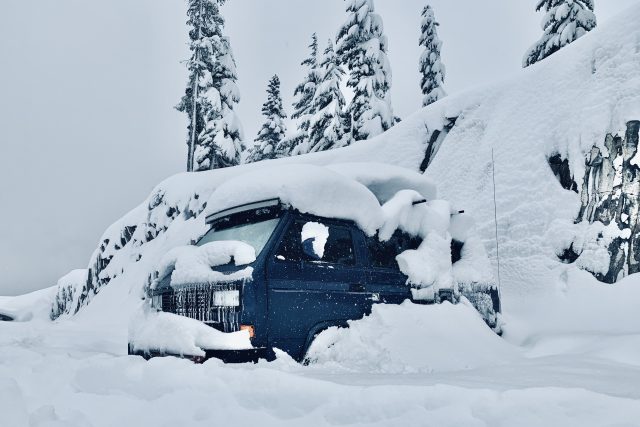
A year later, I purchased my 1990 Vanagon Westfalia, but at that time, I had no intention of living in it. Since that moment, the van has been at the heart of everything I’ve achieved over the past decade. I’ve worked in Europe, Australia, South America, all over the US, all thanks to the Vanagon. It holds a very special place in my heart.
What was the key motivation for transitioning to the Mercedes Sprinter 4WD?
I’ve owned the Vanagon for 10 years, and it has 310,000 miles on the clock. On its final road trip, I covered 8,000 miles, and it just felt tired. I had my heart set on bigger, more challenging trips, and driving the Vanagon eight hours a day is pretty tiring. The Mercedes Sprinter van was always in the back of my mind, as they provide generous living space, enough headroom to stand, comfort, reliability, and can sit at 70 [mph] on the highway. I was dreaming about the Sprinter but also recognized that the Vanagon was the star of the show. The 2WD Vanagon is small, nimble, and pretty capable, but the standard Sprinter is not, so I opted for the 4WD variant. I wanted to create the ultimate overlanding vehicle possible on the Sprinter platform. While it’s not the most capable 4WD or the most liveable, it’s a good compromise between the two. Additionally, the Sprinter benefits from a wide array of aftermarket parts intended to enhance its stock all-terrain performance. After fitting many of them, I’ve been blown away by their technical capability.
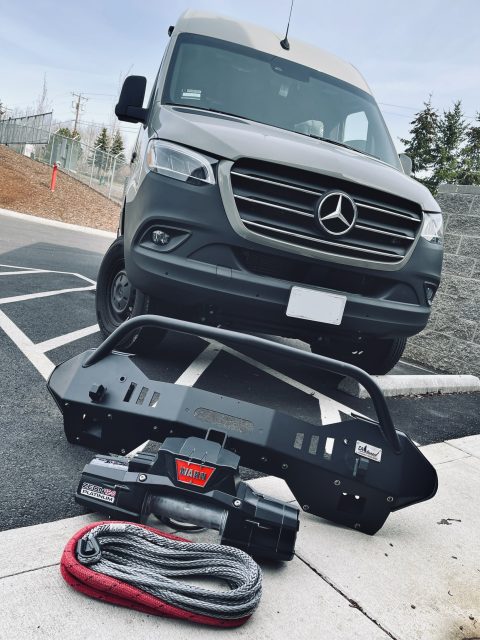
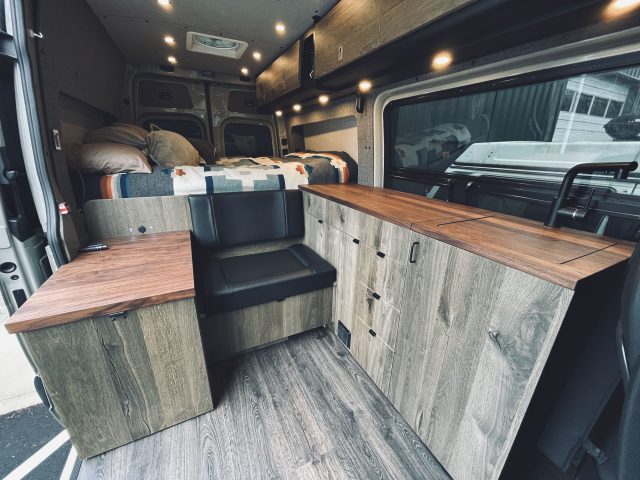
Has the Sprinter 4WD build lived up to your expectations thus far?
It’s been a transition as I get used to the change in weight and size. A big part of developing your driving skills is understanding the rig and its limits, so I’ve had to start over. The goal was to create the most off-road capable Sprinter possible, which meant lots of modifications, such as the Van Compass suspension kit. Choosing this vehicle was risky, and beforehand, I struggled to find any Sprinters online being used off-road. Sure, you see lots of jacked-up examples on social media, but you rarely see them actually overlanding.
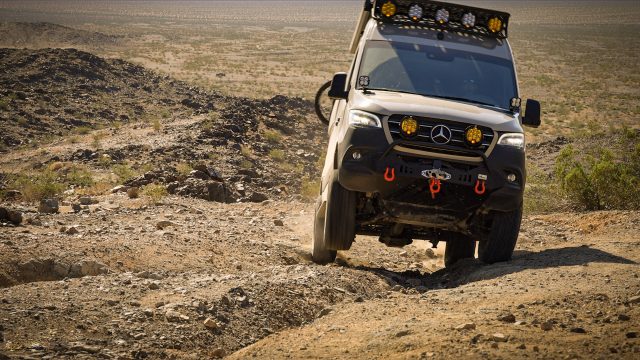
I made a lot of upgrades to improve the van’s all-terrain capability, but until I hit that first trail, I had no idea how it’d perform. I didn’t have six months of test driving—the first episode with the Sprinter was my first time. That was pretty scary, but it also made it real and entertaining. I was blown away by its technical performance, even on what I’d consider Jeep trails. I was a little hesitant because it doesn’t have lockers (something I’ll be looking into), but the Mercedes traction control system is outstanding. Many people build these fancy Sprinter vans but don’t challenge them, whereas, for me, it’s a tool for remote exploration. If it gets damaged, I’ll figure it out. Part of the fun is working with companies to research and develop new components that elevate the Sprinter’s stock capability. There haven’t been many negatives, and it has already taken me to places the Vanagon never could.
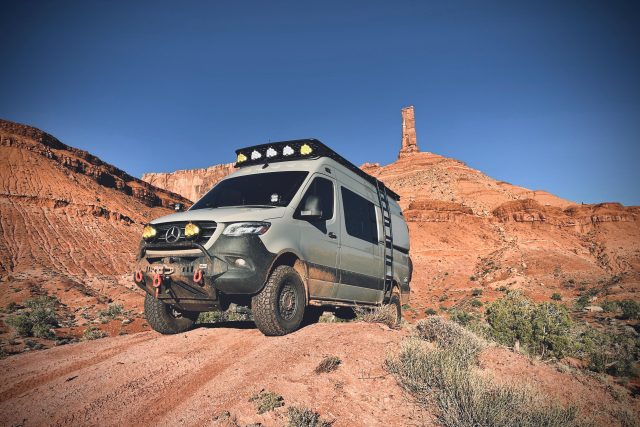
What continues to motivate your travels?
Positive feedback from my audience is a huge motivator, and the desire to tell stories that inspire others. It’s all about pursuing my passion for photography and videography and combining that with the love of exploring backcountry and dirt roads. If I can amalgamate these passions while inspiring people, will help me move forwards. It’s the essence of exploration, not knowing what’s around the next corner, that excites me.

Plans for the future?
Learning more about overlanding and expeditions while getting excited about the prospect of exploring South America or even driving around the world one day. I’ve always believed that to have goals, you need dreams, but beyond that, you need to have a fantasy. Right now, the idea of traveling around the world is fantasy. But at some point, that might become a dream, then a goal, and eventually a reality. In the meantime, I want to explore more of the American West and maybe Baja in the near future.

Where can we find you?
Instagram: Living the Vanlife
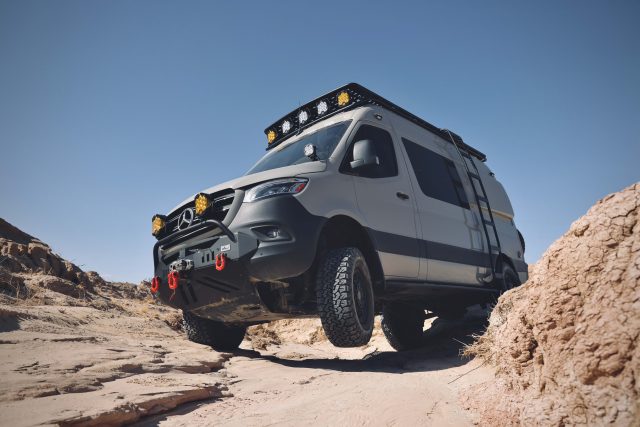
Our No Compromise Clause: We carefully screen all contributors to make sure they are independent and impartial. We never have and never will accept advertorial, and we do not allow advertising to influence our product or destination.


